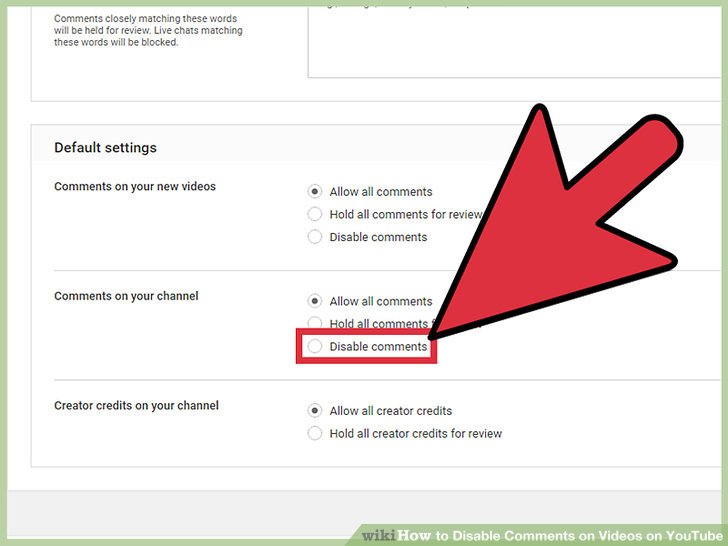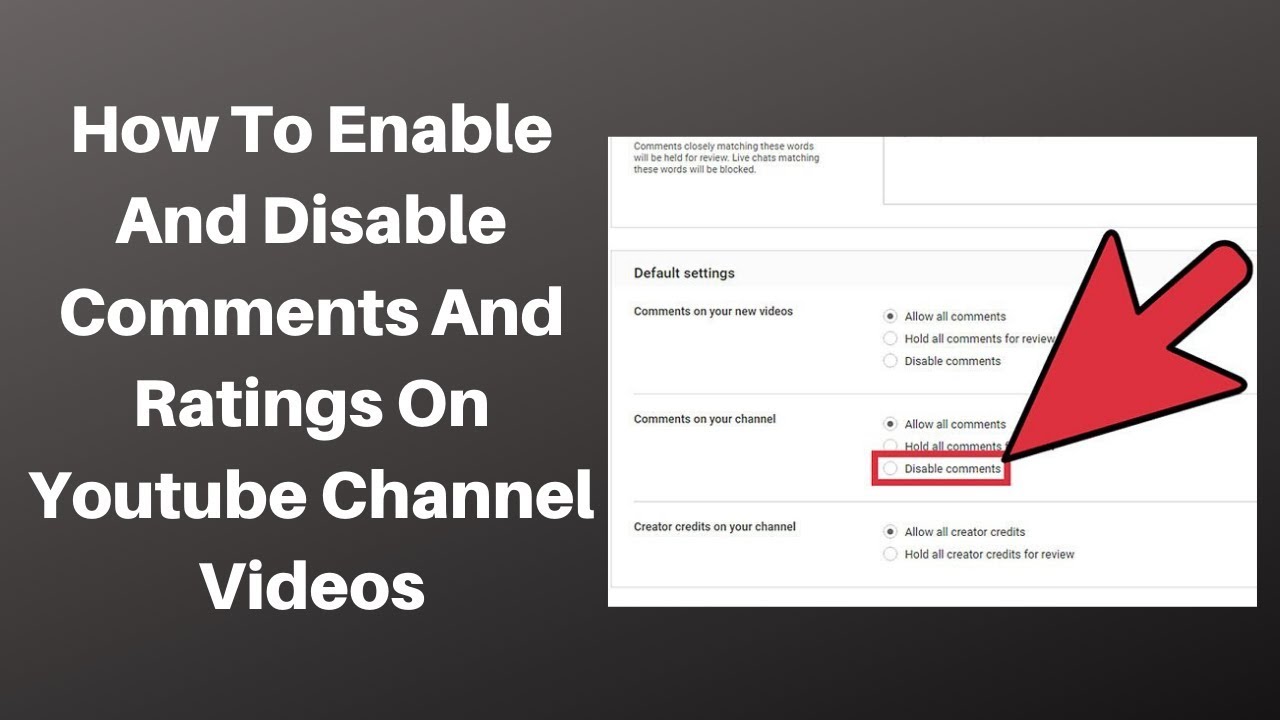Have you ever stumbled upon a YouTube video and noticed that the comments section is mysteriously disabled? You’re not alone! This common occurrence raises a lot of questions about the reasons behind it. Many creators choose to turn off comments for various reasons, ranging from managing negative feedback to protecting their audience. In this blog post, we’ll dig deeper into one of the major reasons: privacy concerns. Let’s explore how safeguarding personal information plays a vital role in this decision!
Privacy Concerns

In today’s digital age, privacy is a hot topic, and it’s no surprise that YouTube creators are taking it seriously. Here are some key factors contributing to the decision to disable comments due to privacy concerns:
- Protection of minors: Many content creators aim to protect younger viewers from potential harassment or inappropriate content. Disabling comments helps shield them from unsolicited interactions.
- Personal information exposure: Comments can sometimes reveal sensitive information about the creator or their audience. Disabling comments minimizes the risk of anyone inadvertently sharing personal data.
- Cyberbullying: The online world can be harsh, and creators often disable comments to protect themselves and their audience from negative remarks or bullying behaviors.
- Negative experiences: Creators might have faced harassment or threats in the past, prompting them to create a safer environment by disabling comments.
Additionally, it’s important to recognize that YouTube itself has implemented several measures to protect user privacy and safety. For instance, creators can block specific words or phrases, but some choose to skip the hassle altogether by disabling comments entirely.
In summary, privacy concerns play a significant role in the decision to disable comments on YouTube. Whether it’s about protecting minors, avoiding personal data exposure, or preventing cyberbullying, these valid reasons highlight the importance of creating a safe online experience for everyone involved.
Also Read This: Why Can't Steve Be on YouTube? Investigating Channel Bans and Suspensions
Content Moderation Challenges

Content moderation on YouTube is a complex and often daunting task. With millions of videos uploaded every day and an even larger number of comments, ensuring a safe and respectful environment can feel like trying to find a needle in a haystack.
One significant challenge is the sheer volume of comments. Imagine trying to read thousands of comments on a single video—all while ensuring they adhere to community guidelines. It’s a Herculean effort! Here are some specific challenges:
- Volume Overload: YouTube faces an overwhelming number of comments across its platform.
- Automated Moderation Limitations: While AI can help filter out offensive content, it’s not perfect. Sometimes it misreads context, letting inappropriate comments slip through or, conversely, flagging harmless ones.
- Subjectivity of Language: What might seem offensive to one person could be perfectly fine to another. This subjectivity complicates moderation efforts.
- Potential for Harassment: Channels can become targets for trolling or harassment, especially on controversial topics, leading owners to disable comments to protect themselves and their audience.
Due to these challenges, many creators opt to disable comments altogether rather than risk allowing harmful content to proliferate on their videos. It’s a tough decision, but sometimes it feels like the only way to maintain a positive and safe community.
Also Read This: How to Add Chapters to Your YouTube Video: Organizing Content for Viewers
Channel Owner Preferences
Channel owners on YouTube often have unique preferences and reasons for disabling comments. These decisions are generally informed by their experiences, audience dynamics, and content type. Let’s explore why some creators choose to keep comments off:
- Focus on Content: Many creators believe that by disabling comments, they can direct audience attention towards the video itself rather than comment debates.
- Avoiding Negative Feedback: Some videos, particularly those dealing with sensitive topics, might attract negativity. To shield their mental well-being, creators may opt to disable comments.
- Preserving a Brand Image: For brands or businesses, maintaining a polished public image is crucial. Disabling comments can help prevent any potential backlash from users.
- Personal Preference: Simply put, some creators prefer a quieter space. They may feel overwhelmed by the pressure of moderating discussions and choose to eliminate that stress.
In the end, every channel owner has their reasons, and respecting those choices is key to understanding the broader landscape of YouTube interactions.
Also Read This: How to Get an Official Artist Channel on YouTube
5. Influence of Age Restrictions
YouTube has taken significant steps to ensure its platform is safe for users of all ages. One of the primary reasons comments may be disabled on certain videos is due to age restrictions. When a video is marked for a specific age group, especially for content that may not be suitable for children, YouTube often disables comments to protect younger viewers from potential negative interactions.
Here’s how age restrictions play a role in disabling comments:
- Child Safety: YouTube prioritizes the safety of minors. For videos aimed at children or containing content that may be sensitive, disabling comments prevents inappropriate discussions and keeps the environment positive.
- Content Moderation: Videos flagged with age restrictions require stricter moderation. By turning off comments, YouTube reduces the risk of harmful or predatory comments slipping through the cracks.
- Legal Compliance: Regulations like COPPA (Children’s Online Privacy Protection Act) compel platforms to protect children’s privacy. Disabling comments on children’s videos helps YouTube comply with these laws.
Moreover, creators can choose to limit comment access on their videos if they feel the content may attract inappropriate feedback. This creates a safer, more controlled environment where viewers can enjoy content without the worry of harassment or negativity.
6. Conclusion
In the vast landscape of YouTube, comments serve as a way for viewers to engage, share opinions, and connect with creators. However, there are several valid reasons why comments might be disabled on specific videos. From ensuring user safety to complying with legal regulations, YouTube takes a proactive stance in fostering a secure viewing environment.
As we’ve discussed, age restrictions are a significant factor in this decision-making process. By disabling comments on certain content, YouTube not only protects younger audiences but also creates a more positive experience for everyone. Ultimately, while it may seem restrictive, these measures aim to enhance the overall quality of community interactions.
Creators and viewers alike can appreciate the importance of maintaining a respectful dialogue on such a vast platform. While comments are often a vital part of social media engagement, sometimes it's just safer to keep the conversation offline. After all, a positive and constructive environment benefits everyone involved!
 admin
admin








